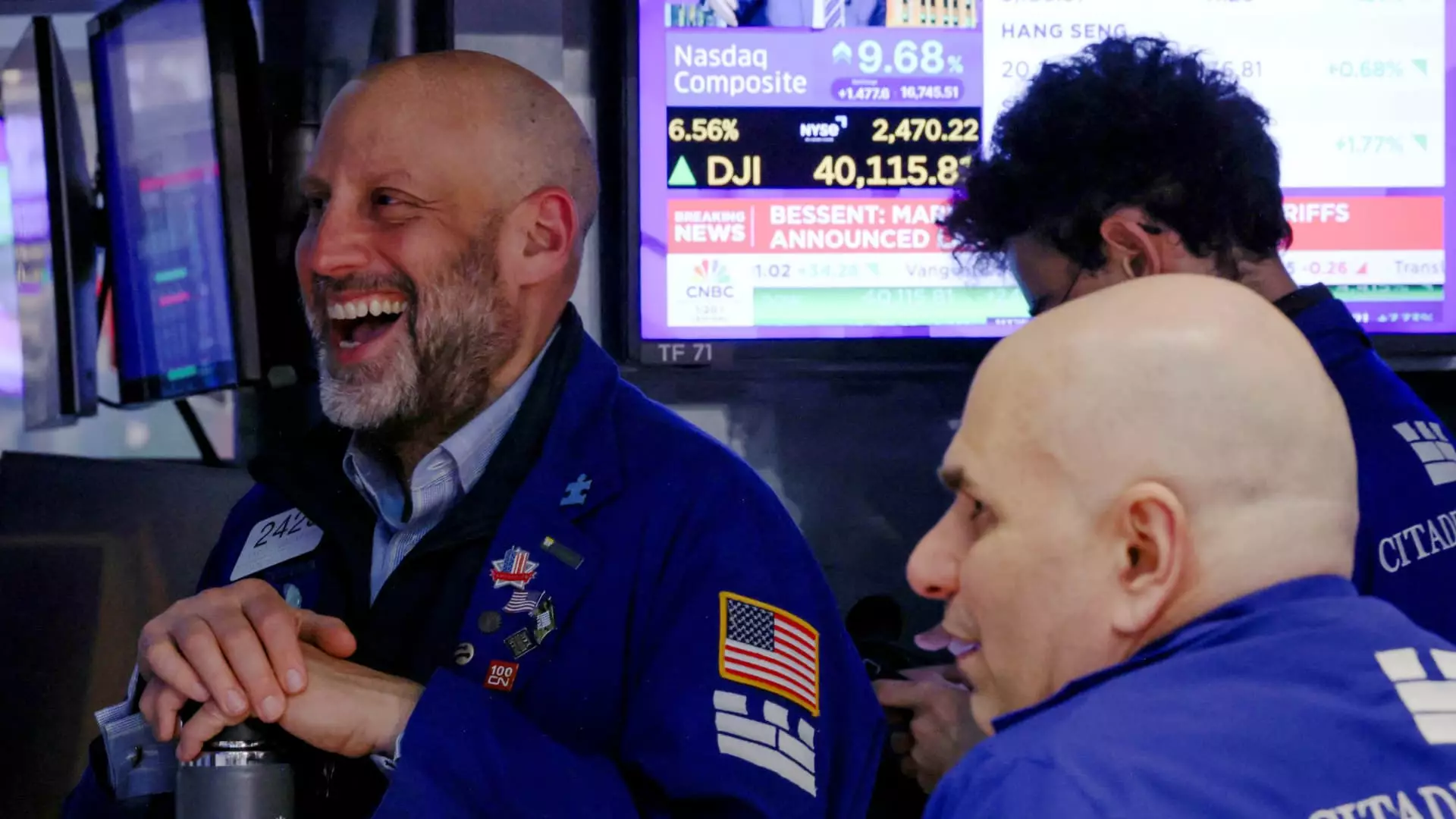On an otherwise typical Wednesday, the stock market experienced an electrifying surge that took many by surprise. Instigated by President Trump’s announcement of a three-month pause in certain ‘reciprocal’ tariffs, stocks leaped dramatically out of the deep pit they had recently found themselves in. The Dow Jones Industrial Average soared by 3,028 points—a staggering 8%—marking its most significant one-day gain since the turbulent financial landscape of 2020. Similarly, the Nasdaq Composite experienced a volatile 12.4% upsurge, the largest since 2001. Amid the chaos of the previous week, where market sentiment plummeted under the weight of tariff fears, these figures offered a glimmer of hope to investors.
Yet, the rally was not without its contradictions. Trump’s social media platform buzzed with the announcement of a temporary reduction in tariffs—a playful diversion meant to soothe investor anxiety. However, this was juxtaposed against the stark reality of a looming 125% increase on Chinese imports, sending a clear message: tariffs are not significantly decreasing; they may merely be pausing. It felt less like a genuine reprieve and more like a ploy to distract from a fundamentally troubled economic state.
The Immediate Impact on Major Players
As the news reverberated through trading floors, stocks that had been hard-hit by trade tensions enjoyed a renaissance. Tech giants like Apple and Nvidia surged by impressive percentages—11% and 13%, respectively. Even established retail player Walmart saw its shares rally by 9.7%. However, the most impressive jump belonged to Tesla, which skyrocketed more than 19% following the announcement.
While these gains may initially appear encouraging, they prompt a critical examination. Are these stock price increases sustainable, or are they simply an overblown reaction to a temporary pause that may not address the underlying issues affecting the market? Though the tariffs were halted momentarily, the deep-seated fears surrounding the trade war and its repercussions linger. Investors would be wise to remember past patterns—temporary rallies often mask more significant issues lying beneath the surface.
Underneath the Boisterous Optimism
Adam Crisafulli, founder of Vital Knowledge, aptly observed that this rally was ignited by a sense of relief following the previous week’s losses, which had left the market in a state of turmoil. Traders had been bracing for further dips, and the announcement acted as a deflection from genuine fear. Yet this optimism is precarious; crisply summed up by seasoned strategist Sam Stovall: while a temporary rally may take place, one should not assume the bottom has been reached—a sentiment that resonates with anyone who has watched market volatility over the years.
The statement regarding the 90-day pause, even if celebrated, does not erase the long-term consequences of increasing tariffs on China. This surge was an evasive maneuver from Trump, orchestrating chaos in a way that feels akin to a magician performing sleight of hand. The very act of creating a temporary respite from tariffs does not alter the reality of their return, nor does it neutralize market instability.
The Bitter Reality for Investors
In a market already skewed by political hyperbole, this latest surge serves as a warning sign rather than a beacon of hope. Anxiety about tariffs had previously sparked a four-day rout, culminating in a loss of more than 4,500 points for the Dow and a 12% slide for the S&P 500—a level of decline unsettlingly reminiscent of the early days of the pandemic. As traders grappled with the ambiguous communication from the administration and the potential for heightened trade conflict, confidence diminished.
While Trump’s reassurance that “now is a great time to buy” may resonate with those blindly optimistic about the market, it raises important questions about the true state of the economy. It’s easy to celebrate short-term victories, but savvy investors know that markets often experience a reversion to the mean, and this current frenzy could lead to feelings of remorse once reality resumes its more typical path.
Investors should remain vigilant and discerning, understanding that volatility is often the market’s legacy. Quick surges usually spark joy that is all too fleeting, slipping back into the void of uncertainty as soon as the impetus fades. In contemplating this largely capitalist narrative of highs and lows, we are unwittingly learning to dance with the very unpredictability that fuels market fears.

Leave a Reply